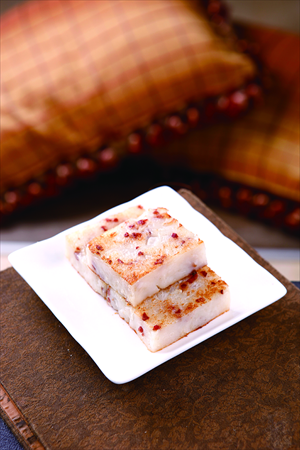Relish the radish: the humble vegetable makes its annual appearance

A widely-known Chinese saying best explains the popularity that the radish enjoys among Chinese diners every winter: "Eating radish in winter and ginger in summer, one would not need any prescriptions from doctors."
Thanks to their crunchy texture, low calories, rich vitamins and high dietary fiber, radishes feature heavily in both northern and southern Chinese cuisines despite hugely different culinary aesthetics.
Available at almost any open market in many varieties and priced as low as 2 yuan ($0.32) a kilo, it can be found on the tables of high-end restaurants and more modest, local eateries alike.
"It is true radishes are very cheap to buy, but it doesn't mean it is a low-end ingredient," said Hao Jingguang, executive chef of the Zhili Native Association in Haidian district, which specializes in traditional Chinese dishes passed down from ancient dynasties. "It has many major health benefits which anyone can benefit from."
The most popular radish varieties found on dining tables are the white radish, and the rose-heart radish, or xinlimei, a unique radish of Chinese origin.
Mild in flavor and less pungent compared to smaller radishes, the white radishes, or daikon as it is better known by its Japanese name, has the shape of a large carrot. It can be pickled as side dish, stir-fried, or, perhaps most delectably, stewed in soup.
The ball-shaped rose-heart radish, or xinlimei, has bright-red flesh inside its white skin.
"The two radishes can be both used in snacks, side dishes, hot dishes, soup and in drinks," said Wu Chen, manager of the Food Research and Development Center of Beijing's Jindingxuan restaurant in Chaoyang district.
Once the pungent flavor and slight odor have been removed, it tastes bright and fresh and can help bring out the flavor of other ingredients.
Popular dishes
The classic Cantonese radish cake, made of white radish, is one of the most popular snacks among winter diners at Jindingxuan, a popular chain, said Wu. While the white radish is being shredded and minced, it is also mixed with rice flour to make it sticky. Fried together with Chinese sausage, the watery, squared cakes have a wonderfully tasty flavor.
Sliced white radish with dried scallop and chicken sauce is one of the most popular radish dishes at the Zhili Native Association restaurant. Seasoned with only a few drops of edible oil and a pinch of salt, the simply prepared dish is refreshing. One person's portion can be sold for as much as 100 yuan ($16) in some restaurants, according to Hao.
Another popular preparation is the traditional pickled radish with duck soup, as offered at Jindingxuan. Also a popular dish in Chinese households, the sour taste whets the appetite and also removes the gamey smell of the duck.
The sweet-flavored rose-heart radish is best eaten raw. But that doesn't mean Beijing chefs haven't gotten creative with it. At Beijing's famed Dadong Roast Duck Restaurant, chefs serve cucumber slices, soy sauce and steamed buns that can be stuffed with sliced rose-heart radish along with sliced, roasted Peking Duck. The slightly pungent flavor of the radish plays wonderfully against the city's signature dish.